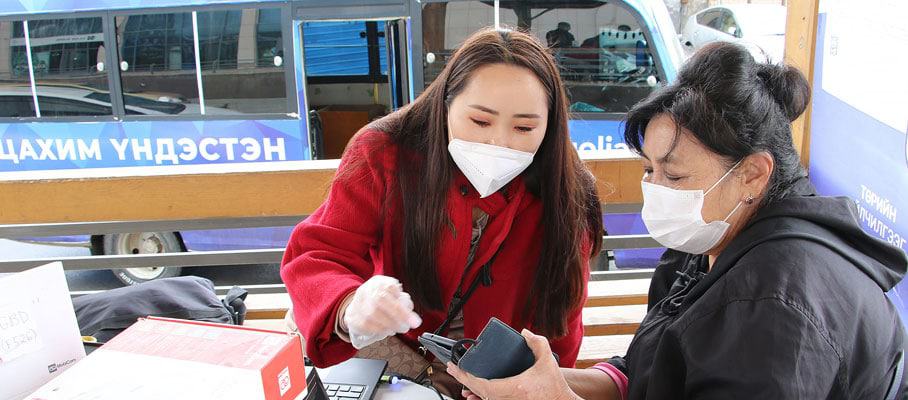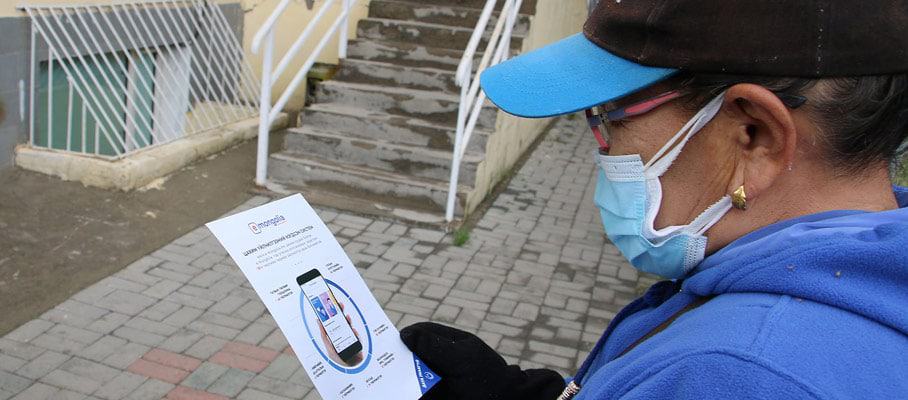How To Do Digital Government: Experiences From E-Mongolia
Almost a year ago, Mongolia launched the e-Mongolia platform to streamline public service delivery. The goals were to reduce bureaucracy, decrease duplication of effort between government organisations, and counter citizens’ frustration with inefficient public services. Bolor-Erdene Battsengel on learnings and successes.
Mongolia is one of the most sparsely populated and the 18th largest country and the second largest landlocked country in the world. Located in East Asia, bordering China to the south, Russia to the north, Mongolia has retained its nomadic cultures. Most of the country is hot in the summer and extremely cold in the winter, with January averages dropping as low as −30°C. Mongolia has been a democratic country since 1990.
Why and How Has Mongolia Implemented E-Governance?
Digitalisation in Mongolia offers an important opportunity to increase accessibility to government services and make the public service work better for its citizens. In 2020, the Mongolian government set out its five-year mission to build a ‘Digital Nation’, harnessing data and technology to facilitate innovation, streamline public services, and diversify Mongolia’s mining-reliant economy.
The first step of our journey to becoming a digital nation was the launch of the e-Mongolia platform. The goal of this system is to digitalise public services and integrate many other separate digital platforms. On October 1, 2020, we launched the e-Mongolia platform with 181 public services that integrated 25 government entities.
We would like to emphasise that strong political leadership is very important to ensure the success of digital governance and accelerate its development. Our experience has also shown that improving the legal environment is crucial for government agencies to reach a consensus. The information and communication technology (ICT) sector’s legal and regulatory environments are equipped to deal with ongoing digital development. The parliament of Mongolia established the Innovation and Digital Policy Standing Committee to drive ICT development. The most recent achievement is that the Parliament of Mongolia has approved new laws that accelerate the digital development of Mongolia such as Personal data protection law, public information and open data law, Cybersecurity law and Digital Signature law.
By December 20, 2021, e-Mongolia already provides 606 of the most in-demand government services, integrated with 59 government entities – from getting an ID card to ordering a passport or applying for a business license. E-Mongolia delivers governmental service through web and mobile applications. Moreover, for citizens who are unable to use smart devices or the internet – especially marginalised communities such as the elderly and people with disabilities – e-Mongolia staff delivers service to citizens in the one-stop shopping centres.

© e-Mongolia
As a result, the lifestyle in the cities and urban areas has been changed a lot. Citizens can get government services within five minutes instead of travelling to public offices in traffic jams. It used to be common to spend an entire day in traffic and then the service queue and then wait for documents or references for one or two weeks. Now it is only five minutes.
How Has E-Mongolia Impacted The Everyday Life Of Mongolians?
As of December 20, 2021, over 2 million Mongolians (out of a population of 3 million) use e-Mongolia to access government-provided services, and online services were delivered 4,762,725 times. E-Mongolia is intrinsically linked to the everyday life of Mongolians. In social terms, e-Mongolia enables a more inclusive environment, allowing even the most vulnerable populations to access public services. For example, people with disability can get public services through the e-Mongolia web or mobile application instead of travelling through not friendly enough infrastructure. Economically, e-Mongolia allows significant financial savings for both individual citizens and the government, which could be used to implement other key SDGs: it is estimated that a total of USD 30 million will be saved annually through reduced paperwork, postage, fuel costs, and labour. Environmentally, e-Mongolia reduces Mongolia’s carbon footprint by embracing digital innovations and tools, reducing paper waste, petrol consumption, et cetera.
Due to COVID-19, the need for innovative, digital solutions for the Mongolian public to access timely information, especially related to COVID-19 and vaccinations, increased significantly. In addition, due to strict COVID-19 restrictions in place, the people in Mongolia faced critical challenges to access the needed public services through traditional, offline proceedings. This situation further accelerated the use of the e-Mongolia platform.

© e-Mongolia
Generally, it takes two to five minutes to get an online service through the e-Mongolia system, while traditional proceedings take an average of three hours but may also take several days. Based on the total number of public services accessed in 2021, citizens are expected to save a total of 3,581 hours per year and 52.6 billion Mongolian tugrik as a result of the 571 services currently available through e-Mongolia.
Complaints regarding corruption and bribery decreased by 20 to 30 per cent according to the report by the Anti-Corruption Agency.
How To Accelerate Digital Governance
My point of view is that to accelerate the development of digital governance, countries need to take the following four important steps. As a result, the main constraints on e-government development will be wipe out in the first place.
- Improve the legal environment for digital development. Fundamental law reforms include defining rules on exchanging information between government entities, specifying which data is open or closed, how to protect personal information, and that citizens are notified when personal information is used. Other priorities are to ensure a law for a national cyber security system and a legal framework for digital signatures. As a result, the government do not require physical documents or notarised documents from citizens because government entities are interconnected and rules are defined for exchanging data digitally.
- Ensure high-level political leadership. Depending on the government, the president or the prime minister should provide leadership at the political level to emphasise the importance of e-government. In Mongolia, at the parliamentary level, the establishment of a Standing Committee on Innovation and Digital Development was also an important step.
- Follow the advice of a model country. It is important to follow in the footsteps of countries who are leaders in digital governance and who set the respective international standards, such as Estonia. Take advice from such countries, learn from their experience, and do not repeat their mistakes.
- Establish a project implementation unit. It is crucial to establish a project unit to improve the coherence of public services in government organisations, to engage in business process re-engineering, and to ensure that the digital strategies of the separate government entities are integrated. As a consequence, individual e-government projects have a common goal, and the coherence between projects is improved while duplicate infrastructure and duplicate investment are reduced.
- How To Do Digital Government: Experiences From E-Mongolia - 8. February 2022
